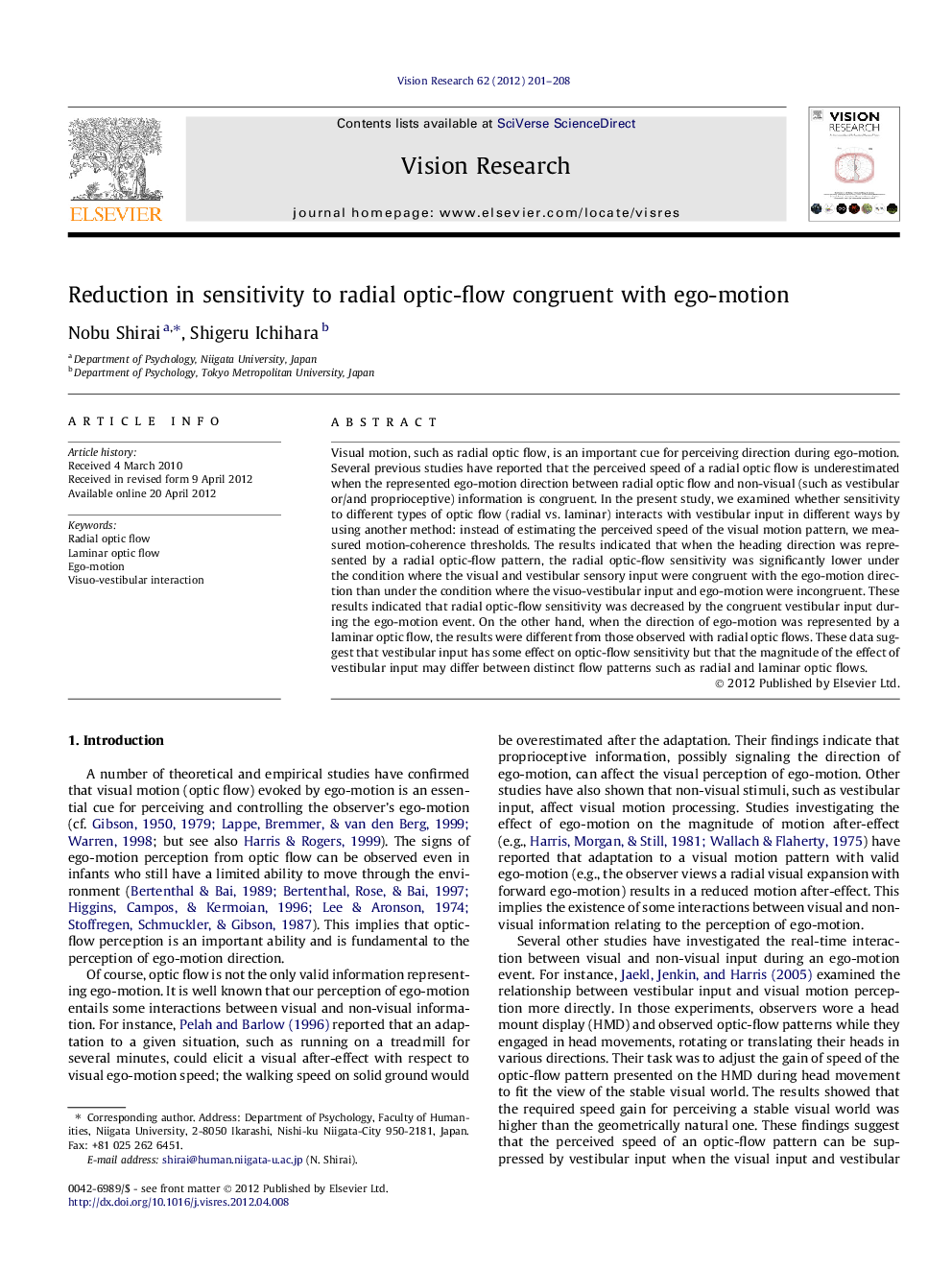| Article ID | Journal | Published Year | Pages | File Type |
|---|---|---|---|---|
| 6203709 | Vision Research | 2012 | 8 Pages |
Visual motion, such as radial optic flow, is an important cue for perceiving direction during ego-motion. Several previous studies have reported that the perceived speed of a radial optic flow is underestimated when the represented ego-motion direction between radial optic flow and non-visual (such as vestibular or/and proprioceptive) information is congruent. In the present study, we examined whether sensitivity to different types of optic flow (radial vs. laminar) interacts with vestibular input in different ways by using another method: instead of estimating the perceived speed of the visual motion pattern, we measured motion-coherence thresholds. The results indicated that when the heading direction was represented by a radial optic-flow pattern, the radial optic-flow sensitivity was significantly lower under the condition where the visual and vestibular sensory input were congruent with the ego-motion direction than under the condition where the visuo-vestibular input and ego-motion were incongruent. These results indicated that radial optic-flow sensitivity was decreased by the congruent vestibular input during the ego-motion event. On the other hand, when the direction of ego-motion was represented by a laminar optic flow, the results were different from those observed with radial optic flows. These data suggest that vestibular input has some effect on optic-flow sensitivity but that the magnitude of the effect of vestibular input may differ between distinct flow patterns such as radial and laminar optic flows.
⺠The visuo-vestibular interaction during ego-motion is investigated. ⺠Congruent vestibular input reduces the radial optic flow sensitivity. ⺠Contrastingly, vestibular input has less effect on the laminar flow sensitivity.
